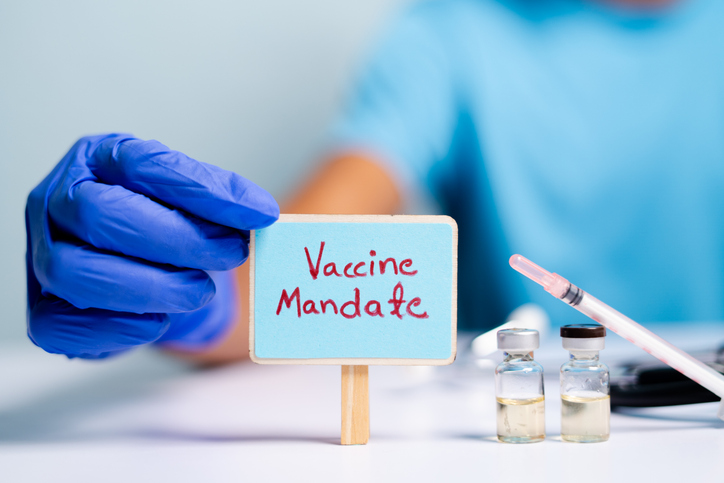The COVID-19 pandemic-era enhanced subsidies for Obamacare are set to expire on December 31, and members of Congress are at odds over whether to extend them.
On October 1, the federal government shut down when Democrats in the Senate would not join Republicans to pass a continuing resolution (CR) bill to fund the government unless Republicans agreed to make the enhanced subsidies permanent. Republicans hold the majority in the Senate but need seven Democrats to avoid a filibuster.
Republicans say they want to negotiate Affordable Care Act (ACA) changes as a separate issue.
Open enrollment for plans on the health care exchanges begins on November 1, and insurance companies have indicated premiums for 2026 will increase by at least 15 percent.
The Congressional Budget Office estimates permanently extending the enhanced subsidies would increase the budget deficit by $350 billion over ten years, not including additional billions of dollars in interest costs.
Hidden Costs
Obamacare subsidies have long been a bone of contention between Republicans and Democrats. During the pandemic, Congress under Democrat control, extended the subsidies to allow households earning as much as $600,000 to qualify. The extension ends in 2025.
With subsidies, enrollees have limited exposure to the true costs of Obamacare plans. The government pays the subsidies directly to the insurance companies, and the insurance companies lower the monthly premiums and other out-of-pocket costs before they bill the policyholder.
“With Covid-era subsidies, taxpayers are paying for 90 percent of the premiums charged in the [Obamacare] marketplace exchanges,” wrote John C. Goodman, president of the Goodman Institute for Public Policy Research and co-publisher of Health Care News, in Forbes. “If the subsidies are allowed to expire, the taxpayer share drops to 80 percent. That means the government is still paying the lion’s share of the costs.”
Obamacare Cliff
Since Congress enhanced the Obamacare subsidies in 2021, Obamacare enrollment has doubled from 12 million in 2021 to 24.32 million today, and the number of enrollees with incomes exceeding 400 percent of the federal poverty level has quadrupled to more than 1.5 million households, according to a KFF analysis. Subsidy eligibility is based on income, not assets.
Premiums for Obamacare plans vary widely and are based on where an enrollee lives and the coverage level chosen (Bronze, Silver, Gold, Platinum, Copper). (For more on Copper plans, see story on page 19). Premiums can range in price from $1 to more than $1,000 a month, on top of co-pays and deductibles, reports Nerdwallet.
Insurers depend on lower-cost, younger, and healthier enrollees to balance out their risk pools. Such enrollees are likely to drop out of Obamacare if the premiums cost more than they would spend directly for health care. (See related article on indemnity insurance, pages 20 and 21).
Reform Opportunity
Health care reformers have advanced several proposals to address what they say are the fundamental problems with Obamacare.
In an October 1 op-ed in the Washington Post, Avik Roy of the Foundation for Research on Equal Opportunity suggested a bipartisan compromise that would reduce premiums for young people and directly fund premiums for people with preexisting conditions.
Michael Cannon of the Cato Institute wrote in National Review that the only “defensible” deal on Obamacare would be for Congress to make permanent “President Trump’s biggest first-term health victory”: a rule allowing consumers to buy short-term limited duration insurance plans that last a full year and were renewable for three years beyond that.
Political Timidity
Republicans backed themselves into a corner when they punted on the One Big Beautiful Bill Act (OBBBA), says Charles Silver, a professor at the University of Texas School of Law and coauthor of Overcharged: Why Americans Pay Too Much for Health Care.
“Personally, I believe that we would have seen more serious reforms in the OBBBA if they were going to happen at all,” said Silver. “There was a golden opportunity for the GOP to really dig in and fix problems, but the party chickened out and made mostly adjustments around the edges.”
Silver says Republicans managed to slow down the rate of Medicaid spending through the OBBBA, but that can easily be undone.
“The Democrats think that government can solve all problems if it just spends more money; Republicans claim to disagree but won’t make any serious cuts because their main objective is to hold onto power, which they fear they will lose if they cut back on entitlements,” said Silver.
“The best predictor of the future is the past,” said Silver. “I don’t see much changing until there is a financial crisis, at which point our elected representatives will likely enact ‘reforms’ that make things even worse.”
Base Concerns
Both parties have dug in their heels on the enhanced subsidies, says HSA Coalition President Daniel Perrin.
“I think each party’s base would have a great deal of difficulty, bordering on impossible, to compromise on the COVID-era ACA enhanced subsidies, for reasons other than the subsidies themselves,” said Perrin.
“Republicans are resistant to rejecting the subsidies, [even while] knowing that ACA plans pay for abortion and transgender transition surgeries,” says Herrin. “Those are not issues the GOP will be able to ignore, especially since the Charlie Kirk assassination and the mass shootings by transgender individuals.”
Perrin says he believes the Democrats will vote to pass a clean CR bill and “use the COVID-era credits as a political issue in the midterms.”
Republicans should respond with reforms that increase consumer choice, says Perrin.
“Transparency and cash prices will help move us back to a more rational system and help contain costs, which are killing the average American family,” said Perrin.
AnneMarie Schieber ([email protected]) is the managing editor of Health Care News.




